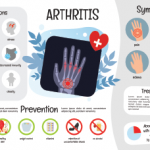Charles G. Helmick III, MD, Retires After 42 Years with the CDC
On Dec. 31, 2021, after 42 years of service, Charles (Chad) G. Helmick III, MD (Capt., USPHS, Ret.), officially retired from the Centers for Disease Control and Prevention. He joined the CDC in 1979, when Jimmy Carter was president, and served through eight administrations. His career path has been notably marked by his spearheading efforts at the CDC to provide public health evidence to encourage more focus on chronic diseases. Now enjoying the fruits of retirement, including time with grandchildren, Dr. Helmick reflects on the trajectory of his CDC career.
Dr. Helmick obtained his medical degree at Johns Hopkins University and completed a three-year residency in internal medicine at Baltimore City Hospital, after which he joined the CDC’s Epidemic Intelligence Service program. After six years spent largely in infectious disease work, Dr. Helmick realized he wanted to have a bigger impact on population health and placed his focus on chronic, disabling diseases.
The obstacles to directing funding to combat chronic diseases mostly distilled down to the reality, he recalls. “Diseases that kill people get a lot more attention.” The answer to this conundrum, in his thinking, was better documentation of the burden of arthritis and other chronic conditions. “I thought arthritis was the most ‘sellable’ because, from a public health point of view, it affects so many people and there are underused ways to manage it with physical activity and self-management education,” he recalls.
Dr. Helmick embarked on a series of studies establishing the prevalence of arthritis, projecting future prevalence and arthritis-attributable activity limitations, working with the Johnston County Osteoarthritis Project conducted by the Thurston Arthritis Research Center (TARC) at the University of North Carolina (UNC) School of Medicine, Chapel Hill. Aided by collaborations with the Arthritis Foundation and the ACR, the CDC’s Arthritis Program was created, with a funding stream, in 1999.
Since that time, the studies have expanded to include estimates of direct and indirect costs and effects on quality of life. Education efforts increased as well, with the CDC sponsoring public health messaging by state health departments and working with groups like the YMCA to adopt physical activity programs for adults with arthritis.
Dr. Helmick says obstacles remain to full adoption of physical activity programs. Here is where making the connection between diseases, obesity and hypertension could yield even more improvements in quality of life, he maintains. For example, being physically active while living with arthritis pain, which may seem counterintuitive, can help reduce arthritis pain and help in the management of obesity and hypertension.




